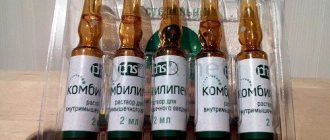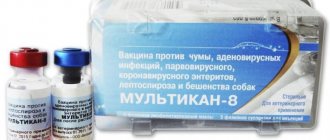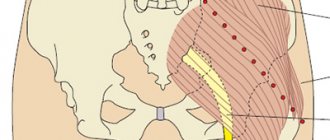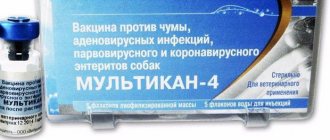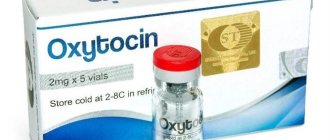Lidocaine is an effective pain reliever. Local anesthetics inhibit the ionic currents involved in the formation of the irritant, due to which the analgesic effect is achieved. Lidocaine stabilizes neuronal membranes, suppresses nerve conduction, and reduces the degree of depolarization.
When is lidocaine indicated?
The range of indications for Lidocaine solution includes the following conditions:
- Local anesthesia required for manipulations in ophthalmology, ENT practice, dentistry, and surgery.
- The use of cephalosporin group of antibacterial drugs as a solvent, the administration of which is characterized by a pronounced pain effect.
Lidocaine for injection allows you to anesthetize the desired area of skin or mucous membrane for several hours, which will be enough for medical manipulation accompanied by increased sensitivity.
Lidocaine gel –
There are both professional lidocaine-based gels for dental clinics and those that can be bought at any pharmacy. An example of a common gel with lidocaine is the drug “Kamistad”. This gel contains lidocaine and chamomile extract as active ingredients. Created specifically for application to the oral mucosa. It has an analgesic and slight anti-inflammatory effect.

Lidocaine gel: price The cost of the drug Kamistad is about 230 rubles. If we talk about analogues for pain relief of the mucous membrane, then a gel such as “Cholisal” has a more pronounced effect. It has a good analgesic and a much more pronounced anti-inflammatory effect. The cost of the last drug is about 300 rubles.
How is lidocaine solution used?
The local anesthetic solution is pre-tested on a separate area of the skin, which makes it possible to assess the presence or absence of an individual negative reaction to the drug.
The dosage of lidocaine solution depends on the type of anesthesia:
- Terminal type of anesthesia involves local application of a solution (2 mg per kg of body weight), maximum 20 ml for an adult patient. The effect lasts no more than 30 minutes.
- Conduction type of anesthesia. The dosage depends on the size of the area that needs to be anesthetized. Maximum dose 20 ml.
- In ophthalmology, the solution is instilled into the conjunctival sac.
- Epidural anesthesia – 22-30 ml of solution.
- Pain relief in obstetrics and gynecology – 20-30 ml of solution.
- In childhood, the dosage is determined individually (on average 3.5-4 mg per kg of weight).
To prevent the development of side effects, the solution must be administered strictly in recommended dosages. The medication Lidocaine, the instructions for use of which contains all the necessary dosages, must be prescribed after a detailed study of the anamnesis.
Indications for use
Infiltration (including subconjunctival), conduction (including retrobulbar, parabulbar anesthesia), spinal and epidural anesthesia.
Relief of persistent paroxysms of ventricular tachycardia (including during myocardial infarction and cardiac surgery), prevention of repeated ventricular fibrillation in acute coronary syndrome and repeated paroxysms of ventricular tachycardia (usually within 12-24 hours), ventricular arrhythmias caused by glycoside intoxication (use a solution with concentration 100 mg/ml).
Adverse reactions
If used incorrectly, adverse reactions may occur:
- Dizziness, drowsiness, convulsions, sensory disturbances.
- Tinnitus.
- Changes in blood pressure, cardiac dysfunction.
- Nausea, vomiting.
- Feeling of heat, swelling at the injection site.
- Burning sensation, thrombophlebitis.
The list of adverse reactions is much wider, so it is necessary to monitor the patient’s condition after administration of the lidocaine solution.
Lidocaine in carpules -
All modern anesthetics have not been produced in ampoules for a very long time; they are produced in disposable capsules (Fig. 2). The carpule already contains a dose of anesthetic; it is inserted into the carpule syringe (Fig. 1), then a disposable very thin needle is screwed on (Fig. 3), and the syringe is ready for anesthesia.
The use of carpule syringes and carpules greatly simplifies the administration of anesthesia for the doctor, thanks to very thin needles - it reduces pain for the patient. Read all the most detailed information on modern anesthesia in our article: “Everything about anesthesia in dental practice”
An example of lidocaine anesthesia in carpules is the drug Xylonor, manufactured by the French company Septadont. The volume of one carpule is 1.7 ml. To increase the duration and depth of anesthesia in carpules

In addition to lidocaine itself, the anesthetic contains special additives (epinephrine, adrenaline or norepinephrine), which constrict the blood vessels at the site of anesthesia, thereby preventing the rapid leaching of the anesthetic.
Contraindications to the use of lidocaine solution
The use of the drug is prohibited in patients with individual intolerance to the active substance. Lidocaine injections are also prohibited for use in the following conditions:
- The first few months after myocardial infarction.
- Severe cardiac pathologies with bradycardia.
- Infectious process at the injection site.
- Period of pregnancy, lactation.
- Children's age (up to 15 years).
- Convulsions due to epilepsy.
In these conditions, the use of lidocaine solution is not recommended.
Pharmacokinetics
The time to reach the maximum concentration in the blood plasma after intramuscular administration is 5-15 minutes, with a slow intravenous infusion without an initial saturating dose - after 5-6 hours (in patients with acute myocardial infarction - up to 10 hours). 50-80% of lidocaine binds to blood plasma proteins. Rapidly distributed (half-life of the distribution phase - 6-9 minutes) in organs and tissues with good perfusion, including the heart, lungs, liver, kidneys, then muscle and adipose tissue. Penetrates the blood-brain and placental barriers and is secreted into breast milk (up to 40% of the concentration in maternal plasma). Metabolized mainly in the liver (90-95% of the dose) with the participation of microsomal enzymes with the formation of active metabolites - monoethylglycine xylidide and glycine xylidide, which have a half-life of 2 hours and 10 hours, respectively. Metabolic intensity decreases in liver diseases (can range from 50 to 10% of the normal value); in case of impaired liver perfusion in patients after myocardial infarction and/or with chronic heart failure. The half-life of continuous infusion over 24-48 hours is about 3 hours; if renal function is impaired, it can increase 2 or more times. Excreted in bile and urine (up to 10% unchanged). Acidification of urine increases the excretion of lidocaine.
Interaction of the solution with other drugs
Lidocaine is not recommended to be combined with the following groups of drugs at the same time:
- Analgesics of the narcotic group - threatens respiratory depression.
- Anticoagulants – increases the risk of bleeding.
- Cardiac glycosides – their effectiveness decreases.
- Novocaine group – increases muscle relaxation.
- The standard is a negative effect on respiratory function.
Lidocaine solution should be combined with extreme caution in diseases of the heart and nervous system, accompanied by systematic use of drugs.
Lidocaine during pregnancy and lactation -
Lidocaine cannot be used as a local anesthetic during pregnancy. However, lidocaine spray can be used, because in the doses used, it does not pose a danger to the fetus. During lactation, the drug should not be prescribed either in the form of a spray or for local anesthesia.
The safest drug for pregnant and lactating women is Ultracaine “DS” (instructions for the drug).
Lidocaine: contraindications for use
- allergy to lidocaine components,
- significant impairment of liver function,
- sick sinus syndrome,
- 2-3 degree atrioventricular block,
- severe bradycardia,
- myasthenia gravis, cardiogenic shock.
Sources:
1. Higher prof. the author's education in surgical dentistry, 2. Based on personal experience as a dental surgeon, 3. National Library of Medicine (USA), 4. “Local anesthesia in dentistry” (Baart J.), 5. “Propaedeutics of surgical dentistry” (Soloviev M.).
special instructions
Lidocaine injection should only be done under the supervision of a physician. Treatment should be carried out under ECG control.
Before starting treatment, it is recommended to examine the level of potassium in the blood, since if its content is reduced, the effectiveness of the drug decreases.
The drug has an effect on the central nervous system, so it is not recommended to drive or engage in potentially life-threatening activities while using it.
Careful monitoring is required for patients prone to seizures, as even small doses may enhance the convulsive effect.
It is necessary to combine lidocaine with caution with those drugs that increase its bioavailability or slow down its elimination, which can be especially dangerous in case of end-stage renal failure.
With intramuscular administration of lidocaine solution, increased activity of creatine phosphokinase may be observed, which prevents the diagnosis of myocardial infarction.
Rapid administration of lidocaine solution can lead to a sharp decrease in blood pressure, with the possibility of collapse. In this case, the toxic effect of the drug with its cardiotoxic effect should also be considered.
Lidocaine
Regional and local anesthesia should be carried out by experienced specialists in an appropriately equipped room with the availability of equipment and drugs necessary for cardiac monitoring and resuscitation, ready for immediate use. Anesthesia personnel. must be qualified and trained in anesthesia techniques and must be familiar with the diagnosis and treatment of systemic toxicities, adverse events and reactions, and other complications.
It should be used with caution in patients with myasthenia gravis, epilepsy, chronic heart failure, bradycardia and respiratory depression, as well as in combination with drugs that interact with lidocaine and lead to increased bioavailability, potentiation of effects (for example, phenytoin) or prolongation of elimination ( for example, in hepatic or end-stage renal failure, in which lidocaine metabolites can accumulate).
Patients receiving class III antiarrhythmic drugs (for example, amiodarone) should be closely monitored and ECG monitoring, since the effect on the heart may be potentiated.
There have been post-marketing reports of chondrolysis in patients who received prolonged intra-articular infusion of local anesthetics after surgery. In most cases, chondrolysis was observed in the shoulder joint. Due to the many contributing factors and the inconsistency in the scientific literature regarding the mechanism by which the effect is realized, a cause-and-effect relationship has not been identified. Long-term intra-articular infusion is not an approved indication for the use of lidocaine. Intramuscular administration of lidocaine can increase the activity of creatine phosphokinase. which may complicate the diagnosis of acute myocardial infarction.
Lidocaine has been shown to cause porphyria in animals and should be avoided in persons with porphyria.
When injected into inflamed or infected tissues, the effect of lidocaine may be reduced.
Before starting intravenous lidocaine, it is necessary to eliminate hypokalemia, hypoxia and acid-base imbalance.
Some local anesthetic procedures may cause serious adverse reactions, regardless of the local anesthetic used.
Conduction anesthesia of the spinal nerves can lead to depression of the cardiovascular system, especially against the background of hypovolemia, so caution should be exercised when administering epidural anesthesia to patients with cardiovascular disorders.
Epidural anesthesia can lead to hypotension and bradycardia. The risk can be reduced by pre-administration of crystalloid or colloid solutions. Arterial hypotension must be stopped immediately.
In some cases, paracervical blockade during pregnancy can lead to bradycardia or tachycardia in the fetus, which requires careful monitoring of the fetal heart rate (see section “Use during pregnancy and breastfeeding”).
Administration to the head and neck area may result in inadvertent arterial entry leading to cerebral symptoms, even at low doses.
Retrobulbar administration may rarely result in entry into the subarachnoid space of the skull, resulting in serious/severe reactions including cardiovascular collapse, apnea, seizures, and temporary blindness.
Retro- and peribulbar administration of local anesthetics carries a low risk of persistent oculomotor dysfunction. The main causes include injury and/or local toxicity to muscles and/or nerves.
The severity of such reactions depends on the degree of injury, the concentration of the local anesthetic and the duration of its exposure in the tissues. In this regard, any local anesthetic must be used in the lowest effective concentration and dose. Lidocaine injection solution is not recommended for use in newborns. The optimal serum concentration of lidocaine to avoid toxicities such as seizures and arrhythmias has not been established in neonates.
Intravascular administration should be avoided unless directly indicated. Use with caution:
- in patients with coagulopathy. Therapy with anticoagulants (eg, heparin), nonsteroidal anti-inflammatory drugs (NSAIDs), or plasma expanders increases the tendency to bleed. Accidental damage to blood vessels can lead to severe bleeding. If necessary, check bleeding time, activated partial thromboplastin time (aPTT), and platelet count;
- patients with complete and incomplete block of intracardiac conduction, since local anesthetics can inhibit AV conduction;
-Patients with seizure disorders should be carefully monitored for CNS symptoms. Low doses of lidocaine may also increase seizure activity. In patients with Melkersson-Rosenthal syndrome, allergic and toxic reactions from the nervous system in response to the administration of local anesthetics may develop more often; -third trimester of pregnancy.
Lidocaine, solution for injection, 10, 20 mg/ml is not approved for intrathecal administration (subarachnoid anesthesia).

